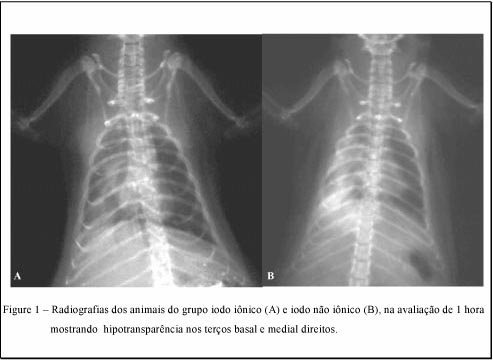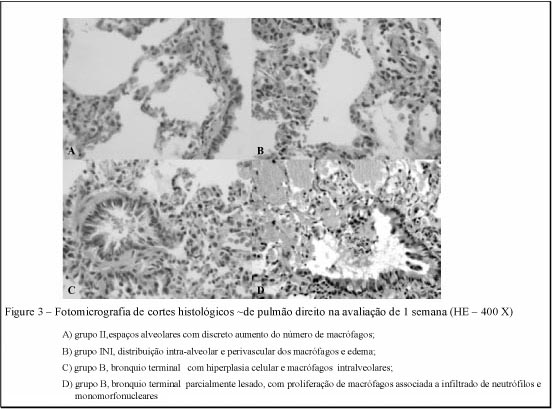PURPOSE: During roadiologic studies, passage of the contrast medium to the tracheobronchial tree may occur, causibng adverse or even fatal reactions. The objective of the present study was to determine the changes in the respiratory tract triggered by the presence of contrast medium. METHODS: Ninety-one rats were divided at random into 5 groups, i.e., an intact control group of 7 animals and 4 groups of 21 rats each. The manipulated control group received physiological saline and the experimental groups respectively received barium, ionic iodine and non-ionic iodine. Under anesthesia and direct visualization of the trachea, 0.75 ml/kg (0.25 ml) of the contrast medium was injected into the animals of each group. The effects of the procedure were determined after 1 hour, 1 day and 1 week, with the animals being sacrificed at each time point by drawing lots. Radiographic documentation was obtained, followed by resection and histopathologic examination of the lungs. RESULTS: After 1 hour, the middle fields and the right upper field were involved in the group injected with barium. In the groups injected with ionic iodine and non-ionic iodine, the entire right lung was found to be opacified. After 1 day and 1 week, the groups injected with iodine were normal, whereas the group injected with barium showed involvement of the middle fields. After 1 week, histopathologic examination revealed that the group injected with barium exhibited large amounts of intra-alveolar, perivascular and peribronchial macrophages CONCLUSION: The ionic and non-ionic iodine contrast media led to temporary changes, whereas barium promoted a chronic inflammatory reaction with maintenance of radiographic translation.
Barium; Contrast mediums; Iodine; Lung





